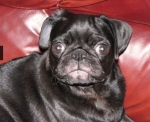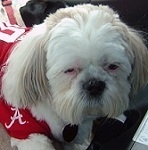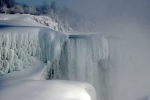New member sleep study question
New member sleep study question
I found this forum two years ago desperate to find answers to problems I was having with my c-pap. Not only did I find answers, I found that my problems were not unique. I cannot believe the wealth of information I found, and the patience of those giving the information is incredible. Thanks to all of you.
I was diagnosed with severe obstructive sleep apnea six years ago. Unfortunately the first two years the machine was in the closet. With the help of my primary doctor, I was finally able to conquer my fear, and my c-pap has been a constant in my life since then. I had a new sleep titration study two weeks ago, and received by new S9 autoset today (thanks to a sleep clinic where this machine is standard), and a new DME that I only found positive comments about on the web. I have downloaded SleepyHead and am awaiting shipment of a card reader. I feel like a kid in a candy store. I will have lots of questions, not only about the reports, but I am not computer savvy (I am 67 years old, can I use that excuse?)
My first question is what does "Sleep stage summary demonstrated increased slow wave sleep at 33.6%. Stage 1 was increased at 31.3%" mean? My overall apnea hypopnea index was 1.7 reflecting two obstructive apneas and one hypopnea. My pressure was reduced from 13 to 10. Since my sleep efficiency was poor a autopap trial might be considered. My doctor is old school but there is hope.
I was diagnosed with severe obstructive sleep apnea six years ago. Unfortunately the first two years the machine was in the closet. With the help of my primary doctor, I was finally able to conquer my fear, and my c-pap has been a constant in my life since then. I had a new sleep titration study two weeks ago, and received by new S9 autoset today (thanks to a sleep clinic where this machine is standard), and a new DME that I only found positive comments about on the web. I have downloaded SleepyHead and am awaiting shipment of a card reader. I feel like a kid in a candy store. I will have lots of questions, not only about the reports, but I am not computer savvy (I am 67 years old, can I use that excuse?)
My first question is what does "Sleep stage summary demonstrated increased slow wave sleep at 33.6%. Stage 1 was increased at 31.3%" mean? My overall apnea hypopnea index was 1.7 reflecting two obstructive apneas and one hypopnea. My pressure was reduced from 13 to 10. Since my sleep efficiency was poor a autopap trial might be considered. My doctor is old school but there is hope.
_________________
| Machine: PR System One REMStar 60 Series Auto CPAP Machine |
| Mask: Swift™ FX Nano For Her Nasal CPAP Mask with Headgear |
| Additional Comments: Rescan and Sleepyhead, Backup machine Resmed S9 autoset |
Re: New member sleep study question
"Slow wave" and "stage 1" refer to the type of sleep, but % of what? You slipped off the front page, though, so I'll bump your thread.jmw wrote:My first question is what does "Sleep stage summary demonstrated increased slow wave sleep at 33.6%. Stage 1 was increased at 31.3%" mean?
_________________
| Mask: Quattro™ FX Full Face CPAP Mask with Headgear |
| Humidifier: S9™ Series H5i™ Heated Humidifier with Climate Control |
| Additional Comments: Software: SleepyHead 0.9 beta |
Download Sleepyhead here: https://sourceforge.net/projects/sleepyhead/
Re: New member sleep study question
Sleep stage normal % is shown here in this reading.
http://en.wikipedia.org/wiki/Sleep
http://en.wikipedia.org/wiki/Sleep
_________________
| Machine: AirCurve™ 10 VAuto BiLevel Machine with HumidAir™ Heated Humidifier |
| Additional Comments: Mask Bleep Eclipse https://bleepsleep.com/the-eclipse/ |
I may have to RISE but I refuse to SHINE.
Re: New member sleep study question
Ah of course. That's percent of total sleep. So it's telling you that 33.6% of your sleep was slow wave, or deep NREM sleep, and that was more than [without CPAP?]. And stage 1, or drowsy sleep, was also more than it was before [whatever] and was 31.3% of your time asleep. So you had both more deep sleep and more light sleep for at least part of one night in a sleep lab. Now there's a clear result! Fork over for the new machine, insurance.
BTW, the card is just a standard SD card. You can get both a reader and an extra card from most places that sell computers. No more of this easy to find as a spotted zebra "smartcard" nonsense.
When you get the card reader, look at the respiratory rate trace in Sleepyhead. Odds are good that when it spikes you're in REM sleep. Sometimes it goes up when you're awake too, but with some practice, you may be able to learn to tell the difference.
BTW, the card is just a standard SD card. You can get both a reader and an extra card from most places that sell computers. No more of this easy to find as a spotted zebra "smartcard" nonsense.
When you get the card reader, look at the respiratory rate trace in Sleepyhead. Odds are good that when it spikes you're in REM sleep. Sometimes it goes up when you're awake too, but with some practice, you may be able to learn to tell the difference.
_________________
| Mask: Quattro™ FX Full Face CPAP Mask with Headgear |
| Humidifier: S9™ Series H5i™ Heated Humidifier with Climate Control |
| Additional Comments: Software: SleepyHead 0.9 beta |
Download Sleepyhead here: https://sourceforge.net/projects/sleepyhead/
- greatunclebill
- Posts: 1503
- Joined: Mon Feb 20, 2012 7:48 pm
- Location: L.A. (lower alabama)
Re: New member sleep study question
jmw wrote: My doctor is old school but there is hope.
nothing wrong with old school. doctors were diagnosing and treating osa long before automatic machines, which are fairly new in the grand scheme of things, with results just as good. my sleep doctor, board certified in 3 specialties and seeing only sleep patients works in a modern teaching hospital and is a professor at the associated medical school. he has done this same thing 20+ years and is himself an osa patient. he is definitely old school and has never asked for a data card.
_________________
| Mask: Quattro™ FX Full Face CPAP Mask with Headgear |
| Additional Comments: myAir, OSCAR. cms-50D+. airsense 10 auto & (2009) remstar plus m series backups |
First diagnosed 1990
please don't ask me to try nasal. i'm a full face person.
the avatar is Rocco, my Lhasa Apso. Number one "Bama fan. 18 championships and counting.
Life member VFW Post 4328 Alabama
MSgt USAF (E-7) medic Retired 1968-1990
please don't ask me to try nasal. i'm a full face person.
the avatar is Rocco, my Lhasa Apso. Number one "Bama fan. 18 championships and counting.
Life member VFW Post 4328 Alabama
MSgt USAF (E-7) medic Retired 1968-1990
Re: New member sleep study question
Thanks for the responses. I read the wikipedia explanation of slow wave sleep, and 20% was minimum so is my 33.6% one of those "it is what it is" don't worry about it?
_________________
| Machine: PR System One REMStar 60 Series Auto CPAP Machine |
| Mask: Swift™ FX Nano For Her Nasal CPAP Mask with Headgear |
| Additional Comments: Rescan and Sleepyhead, Backup machine Resmed S9 autoset |
Re: New member sleep study question
Explains what definition of Stage 3.."deep or slow-wave sleep) is characterized by the presence of a minimum of 20% delta waves ranging from 0.5–2 Hz and having a peak-to-peak amplitude >75 μV. (EEG standards define delta waves to be from 0 to 4 Hz, but sleep standards in both the original R&K, as well as the new 2007 AASM guidelines have a range of 0.5–2 Hz.) This is the stage in which parasomnias such as night terrors, nocturnal enuresis, sleepwalking, and somniloquy occur. Many illustrations and descriptions still show a stage N3 with 20–50% delta waves and a stage N4 with greater than 50% delta waves; these have been combined as stage N3."
To understand full the entire context of the statement in regards to 33% would be helpful but I did find this information below. Wonder if they combined Stage 3 and 4 for you.
http://emedicine.medscape.com/article/1188226-overview
"Sleep in adults
Stage N1 is considered a transition between wake and sleep. It occurs upon falling asleep and during brief arousal periods within sleep and usually accounts for 2-5% of total sleep time. Stage N2 occurs throughout the sleep period and represents 45-55% of total sleep time. Stage N3 (delta or slow wave sleep) occurs mostly in the first third of the night and constitutes 5-15% of total sleep time. REM represents 20-25% of total sleep time and occurs in 4-5 episodes throughout the night.[2]
To understand full the entire context of the statement in regards to 33% would be helpful but I did find this information below. Wonder if they combined Stage 3 and 4 for you.
http://emedicine.medscape.com/article/1188226-overview
"Sleep in adults
Stage N1 is considered a transition between wake and sleep. It occurs upon falling asleep and during brief arousal periods within sleep and usually accounts for 2-5% of total sleep time. Stage N2 occurs throughout the sleep period and represents 45-55% of total sleep time. Stage N3 (delta or slow wave sleep) occurs mostly in the first third of the night and constitutes 5-15% of total sleep time. REM represents 20-25% of total sleep time and occurs in 4-5 episodes throughout the night.[2]
_________________
| Machine: AirCurve™ 10 VAuto BiLevel Machine with HumidAir™ Heated Humidifier |
| Additional Comments: Mask Bleep Eclipse https://bleepsleep.com/the-eclipse/ |
Last edited by Pugsy on Tue Mar 06, 2012 5:13 pm, edited 1 time in total.
I may have to RISE but I refuse to SHINE.
Re: New member sleep study question
I don't think that's what your sleep study is talking about. If I understood that fragment correctly, the study is saying 33.6% of the time you were asleep you were in slow wave, which you learned from wikipedia means that you had 20-50% delta waves. Another person might have 15% slow wave sleep, which would by definition still be 20-50% delta waves. But maybe if I saw that bit of your study in context I'd realize it means something else entirely.jmw wrote:Thanks for the responses. I read the wikipedia explanation of slow wave sleep, and 20% was minimum so is my 33.6% one of those "it is what it is" don't worry about it?
I don't think it's very clear what percentage of each type of sleep is optimal. You can find stats on what's typical, and maybe even associations between some proportions and certain physical or mental illnesses. But that's a long way from saying that more than x% REM sleep causes y. Sleep is still very poorly understood. In any case, worrying about it isn't likely to help.
_________________
| Mask: Quattro™ FX Full Face CPAP Mask with Headgear |
| Humidifier: S9™ Series H5i™ Heated Humidifier with Climate Control |
| Additional Comments: Software: SleepyHead 0.9 beta |
Download Sleepyhead here: https://sourceforge.net/projects/sleepyhead/
Re: New member sleep study question
I'm with Otter on this one.
I think the 33% means that 33% of the time you were asleep, the EEG data said that you were in slow wave sleep: As in 1/3 of the time you were asleep, you EEG was showing 20-50% delta waves.
From what I've read, there doesn't seem to be hard and fast rules about how much stage 3 sleep is really needed. And some studies seem to indicate that the amount of slow wave sleep decreases with age. But I don't think they typically worry about someone getting too much slow wave sleep as a general rule.
I think the 33% means that 33% of the time you were asleep, the EEG data said that you were in slow wave sleep: As in 1/3 of the time you were asleep, you EEG was showing 20-50% delta waves.
From what I've read, there doesn't seem to be hard and fast rules about how much stage 3 sleep is really needed. And some studies seem to indicate that the amount of slow wave sleep decreases with age. But I don't think they typically worry about someone getting too much slow wave sleep as a general rule.
_________________
| Machine: DreamStation BiPAP® Auto Machine |
| Mask: Swift™ FX Nasal Pillow CPAP Mask with Headgear |
| Additional Comments: PR System DreamStation and Humidifier. Max IPAP = 9, Min EPAP=4, Rise time setting = 3, minPS = 3, maxPS=5 |
Re: New member sleep study question
Thanks again for the responses. I don't know if I am overreacting, but the last 4 months have been pretty rough. I was one of those people who never saw their doctor after the initial appointment, and had no idea of what to expect or what the full affect sleep apnea has on the body. Thanks to this forum I am learning. I received a copy of my original sleep study as well as the titration study done last month when I picked up my new S9. I was shocked and very concerned when I read the original study, because it looks pretty bad to the untrained eye. The original sleep study reads: " Total recording time was 478 minutes with a sleep efficiency of 82.6%. Sleep onset latency as 16.5 min and REM onset latency was 382 min. Arousal index was 62.7 of which 1.5 was spontaneous and the rest respiratory. Sleep architecture revealed absent slow wave sleep and REM sleep diminished at 2.5%. Stage I sleep was increased. Respiratory analysis demonstrated 354 obstructive apneas, two mixed apneas and 101 hypopneas. This yielded an apnea hypopnea index of 70.4 Low O2 value for this study was 77%. A review of the hypnagram revealed evidence of REM related O2 desaturation."
Pugsy - thanks for the added resources. My titration study says "Total recording time was 414 min with a sleep efficiency of 26.2%. Sleep onset latency was 98.5 min. REM onset latency was not seen. Arousal index was 7.6 of which 1.5 was respiratory. Sleep stage summary demonstrated increased slow wave sleep at 33.6%. Stage I increased at 31.3%, REM sleep was absent. Overall apnea index was 1.7 reflecting two obstructive apneas and one hypopnea".
Before c-pap sleep efficiency 82.6% with c-pap 26.2% - what am I missing here. Makes no sense - I totally confused. The only positive today is I slept for 11 hours last night, and I love my new mask. Unfortunately it looks like I am locked out of the information screen, so I don't know if it was a good night or not. Still waiting on my card reader.
Pugsy - thanks for the added resources. My titration study says "Total recording time was 414 min with a sleep efficiency of 26.2%. Sleep onset latency was 98.5 min. REM onset latency was not seen. Arousal index was 7.6 of which 1.5 was respiratory. Sleep stage summary demonstrated increased slow wave sleep at 33.6%. Stage I increased at 31.3%, REM sleep was absent. Overall apnea index was 1.7 reflecting two obstructive apneas and one hypopnea".
Before c-pap sleep efficiency 82.6% with c-pap 26.2% - what am I missing here. Makes no sense - I totally confused. The only positive today is I slept for 11 hours last night, and I love my new mask. Unfortunately it looks like I am locked out of the information screen, so I don't know if it was a good night or not. Still waiting on my card reader.
_________________
| Machine: PR System One REMStar 60 Series Auto CPAP Machine |
| Mask: Swift™ FX Nano For Her Nasal CPAP Mask with Headgear |
| Additional Comments: Rescan and Sleepyhead, Backup machine Resmed S9 autoset |
Re: New member sleep study question
Oh we can fix that little lock out. You just need to go into the clinical menu and set the machine to allow you to see the data on the screen and make sure that Sleep Quality is set to ON so that it will show the on screen data. Be sure to check it before noon because it resets to zero for a new day at noon. You can go deeper though and see the old data.jmw wrote:Unfortunately it looks like I am locked out of the information screen, so I don't know if it was a good night or not. Still waiting on my card reader.
Have you seen this on how to get to clinical menu?
http://www.apneaboard.com/ResMed/ResMed ... Setup.html
So you have the pdf download of the full provider manual? If not, let me know and I will send it to you.
BTW...I had horrible titration study also....Slept a grand total of 156 minutes I think it was.
_________________
| Machine: AirCurve™ 10 VAuto BiLevel Machine with HumidAir™ Heated Humidifier |
| Additional Comments: Mask Bleep Eclipse https://bleepsleep.com/the-eclipse/ |
I may have to RISE but I refuse to SHINE.











